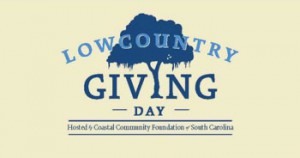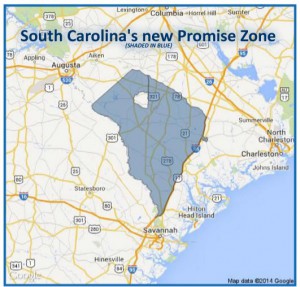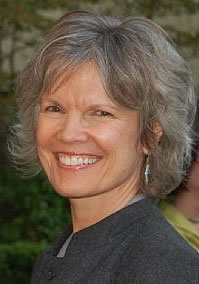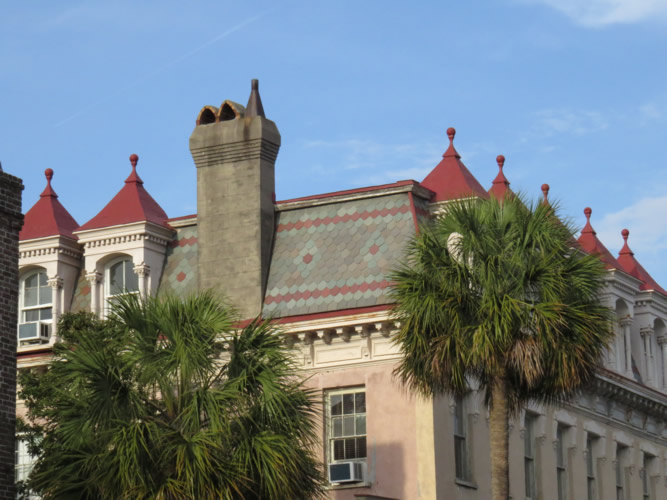North Charleston’s Anthony Rhodes won Best in Show and Best Interior for his 1959 Chevrolet Corvette in Trident Technical College’s 23rd Spring Spin-off car show on April 25. More than 120 classic, new and customized vehicles were shown at the show. Proceeds benefited the W. Athell Yon Fund, which provides tool kits to up to two graduating Automotive Technology students a year. More photos. Photo provided.
IN THIS EDITION | May 4, 2015 | Number 7.26
PHOTO: Best in Show
FOCUS: Why you should give on Lowcountry Giving Day
BRACK: Promise Zone is shot in the arm to S.C.
IN THE SPOTLIGHT: Charleston RiverDogs
GOOD NEWS: Trident United Way’s 2-1-1 evolves, more
FEEDBACK: Readers enjoyed Paris report
CALENDAR: May 4+ — Arts street party, fishing, sharks
REVIEW: How to Win Friends and Influence People
MYSTERY: Landmark under your nose
S.C. ENCYCLOPEDIA: Historic Charleston Foundation
FOCUS
Why you should give on Lowcountry Giving Day
By George C. Stevens, special to Charleston Currents
MAY 4, 2015 | The main reason to give to your favorite charity tomorrow is that they do good work, needed work, work that improves society. Giving tomorrow, May 5, is especially beneficial as dozens of good citizens have pooled their funds and given Coastal Community Foundation $3 million to dole out based on your choices. Those incentivizing donors are letting you decide where their money goes. Who doesn’t want to give like a millionaire, even if only for a single day?
Setting aside those obvious reasons, the not-so-obvious ones reveal something deeply good about America.
In America, we encourage re-invention, innovation and change. When teaching in Europe several years ago, I encouraged my students to challenge the status quo and ask for change. They looked at me like I was Paul Revere. It was a deeply Americanizing experience.
The juggernaut that is the Internet (first disrupting the music industry, then travel, then taxis…) has taken aim at charitable giving. My European friends would be traumatized. My American colleagues find it exhilarating (but not without fear).
Online has risen by 4.9 percent in the last year across this great, innovative nation, according to Blackbaud’s Charitable Giving Report. Lowcountry nonprofits are adopting these new tools. Before they tried it, a few vocal donors balked at the idea of giving large gifts online. Last year changed their minds. In 2014, we saw a credit card gift of $50,000 on the www.lowcountrygivingday.org website. Twenty-nine gifts of more than $10,000 were received online via credit cards. In total, 7,166 gifts were made. The average gift last year was $372.62. So, your gift tomorrow accelerates the adoption of new, and no doubt inevitable changes in how nonprofits raise money. Innovation is the American way.
 Our drive toward continuous improvement and measurement (electronic pedometers anyone?) is also an American ideal. Nonprofits that move a portion of their fundraising online raise money at lower cost than those organizations that still rely on printed mailings, bake sales, and special events. More efficient charities spend more of your gift on your desired outcomes. The efficiency of giving on May 5 is more than twice as good as typical fundraising efforts. Gifts made during Lowcountry Giving Day earn the incentives mentioned earlier, while paying future dividends.
Our drive toward continuous improvement and measurement (electronic pedometers anyone?) is also an American ideal. Nonprofits that move a portion of their fundraising online raise money at lower cost than those organizations that still rely on printed mailings, bake sales, and special events. More efficient charities spend more of your gift on your desired outcomes. The efficiency of giving on May 5 is more than twice as good as typical fundraising efforts. Gifts made during Lowcountry Giving Day earn the incentives mentioned earlier, while paying future dividends.
Not-So-Obvious-Reason Three: Measuring the effectiveness of nonprofits is difficult. There are many measures of success, some specific to specific organizations. When considering a broad swath of the nonprofit sector (as we are during on May 5) perhaps the most robust measures are these: “How many donors does the organization have?” and “Do I know any of them?” Each donor has their own reasons for giving. Together they are like so many different “camera angles” on the organization. If someone you know is giving to an organization it is a good indication you should too. Watch your favorite social media feeds and see where people give. Those who give tomorrow are encouraged to tweet or post status updates about it. Watch the play-by-play on the leaderboard at www.lowcountrygivingday/leaderboard and adjust your giving accordingly.
And the final not-so-obvious reason is that charitable giving is an exercise of self-governance. It is a responsibility we Americans have that is envied around the world. Like voting, charitable giving shapes our society and gives voice to our concerns, but unlike voting, it is freed from direct governmental involvement. A charitable gift redirects a portion of your tax dollars to your local community and shapes that community by the nonprofits you support. Charitable giving is a freedom that needs to be exercised and embraced to be effective.
So during Lowcountry Giving Day, tomorrow May 5, give early and give often. Doing so will make the Lowcountry a better place.
George Stevens is the former president and CEO of Coastal Community Foundation.
COMMENTARY
New Promise Zone is shot in the arm for S.C.
By Andy Brack, editor and publisher
MAY 4, 2015 | Talk about a shot in the arm for the southern rural counties of South Carolina. Witness the just-announced federal Promise Zone designation for a six-county area centering on Allendale County that should pump in millions of dollars of aid over the next 10 years.
![]() But let’s be clear: It’s a hand-up, not a handout for people in the zone area of Allendale, Bamberg, Barnwell, Colleton, Hampton and Jasper counties. There’s a lot of hard work ahead for these counties, nonprofits, government agencies and businesses that are part of the effort to generate more jobs, improve education, reduce crime and get more affordable housing in a region where 28.1 percent of 90,000 residents live in poverty.
But let’s be clear: It’s a hand-up, not a handout for people in the zone area of Allendale, Bamberg, Barnwell, Colleton, Hampton and Jasper counties. There’s a lot of hard work ahead for these counties, nonprofits, government agencies and businesses that are part of the effort to generate more jobs, improve education, reduce crime and get more affordable housing in a region where 28.1 percent of 90,000 residents live in poverty.
It’s not a handout because there’s not a big pot of money that instantly goes with the federal Promise Zone designation. Instead, the SouthernCarolina Alliance, the Barnwell-based economic development nonprofit that will coordinate the effort, will get five Americorps VISTA staffers to recruit and manage volunteers. These professionals also will provide much-needed expertise to help to write grant applications for existing federal grant programs.
In other words, these areas now will have help tapping into federal money and other opportunities to help achieve the Zone’s goals to grow jobs and reduce poverty. And when Zone counties apply for grants in more than 30 federal programs, they’ll be able to get a few extra points in the scoring process that should help them get grants that they may not have qualified for in the past.
 So while there’s not big money now, it’s likely in the future, as highlighted by the success over the last 16 months by the only other rural area awarded a Promise Zone designation — an eight-county area in southeastern Kentucky. So far, its Promise Zone has generated more than $50 million dollars for new projects. An example of its success is how the Knox County Hospital in Barbourville is using federal funding to expand medical care services for 31,883 rural people and add more than 200 jobs. There’s also a new $20 million grant for a pilot project to help people receiving food assistance find jobs and work toward self-sufficiency.
So while there’s not big money now, it’s likely in the future, as highlighted by the success over the last 16 months by the only other rural area awarded a Promise Zone designation — an eight-county area in southeastern Kentucky. So far, its Promise Zone has generated more than $50 million dollars for new projects. An example of its success is how the Knox County Hospital in Barbourville is using federal funding to expand medical care services for 31,883 rural people and add more than 200 jobs. There’s also a new $20 million grant for a pilot project to help people receiving food assistance find jobs and work toward self-sufficiency.
The bottom line for South Carolina: There’s about to be a huge infusion in financial aid to the counties at the southern tip of the state where unemployment approaches 15 percent. Because of the unified vision of the zone counties, people’s lives and living conditions should get much better.
Critics will try to rain on the hope of South Carolina’s new Promise Zone. They’ll complain that the private sector — and not government intervention — should lead transformation of pervasively poor areas.
Question: So how’s that been working for, say, the last 150 years? If the private sector is the savior for people who live in these rural areas, why isn’t their economy better? The answer, of course, is that most of South Carolina simply forgot these areas as people moved in droves to metropolitan areas.
But now Allendale, Bamberg, Barnwell, Colleton, Hampton and Jasper counties have a new lease on life with the Obama Administration’s practical mechanism for local governments, nonprofits, universities and businesses like banks to work together to generate more economic activity.
The bittersweet note about this week’s Promise Zone announcement is how so many other impoverished parts of America need the same kind of help. In the second round of Promise Zone designations, there were 123 applications from across the country, but only eight were awarded. In the final round of designations next year, seven more zones will be announced.
Across the South, there’s a swath of poor counties — an area we call the Southern Crescent — that swings from the Tidewater region of Virginia south along Interstate 95 in the Carolinas. It shifts across middle Georgia and Alabama and turns north to the Mississippi Delta and part of Arkansas. This soft underbelly of the American South is home to millions who have been underserved for generations. People who live here tend to be more impoverished, have a higher rate of joblessness and a higher than normal incidence of a wide range of health problems.
They, too, need Promise Zones. They, too, need a hand up to slough off the shackles of being forgotten.
Andy Brack, editor and publisher of Charleston Currents, also is chair and president of the Center for a Better South, which is shining a light on the Southern Crescent. Learn more here: www.BetterSouth.org.
IN THE SPOTLIGHT
Charleston RiverDogs
 |
The public spiritedness of our underwriters allows us to bring Charleston Currents to you at no cost. This issue’s featured underwriter is the Charleston RiverDogs. The Lowcountry’s leader in sports entertainment, Charleston RiverDogs baseball is an attractive, affordable medium for your group or business. The RiverDogs develop the next major league stars for the 27-time World Champion New York Yankees at one of the finest ballparks in Minor League Baseball — Joseph P. Riley, Jr. Park.
Three short words sum up the every day approach taken by the Charleston RiverDogs front office. The brainchild of club President Mike Veeck, the nine-letter phrase “Fun Is Good” is meant to be a guideline and daily reminder of how employees should approach their jobs and in turn capture the imagination of the fans to turn them into repeat customers.
- Visit the ‘Dogs online at: www.RiverDogs.com.
- You can download the 2015 schedule here
GOOD NEWS
Trident United Way’s 2-1-1 Hotline evolves
The United Way Association of South Carolina (UWASC) will assume management of the area’s 2-1-1 Hotline later this month in a new strategic partnership with the Trident United Way that will allow for better services and use of real-time data for improvement.
 “To the vast majority of people who call 2-1-1, there will be no difference in the services they receive, which include referrals to direct service providers, crisis counseling and local information about getting help,” shares Amanda Lawrence, vice president of community impact at Trident United Way (TUW). “We see this is as an opportunity to maintain a high quality service, strengthen our ties with our state association, gain access to additional data and successfully align in this area as we have with UWASC on public policy.”
“To the vast majority of people who call 2-1-1, there will be no difference in the services they receive, which include referrals to direct service providers, crisis counseling and local information about getting help,” shares Amanda Lawrence, vice president of community impact at Trident United Way (TUW). “We see this is as an opportunity to maintain a high quality service, strengthen our ties with our state association, gain access to additional data and successfully align in this area as we have with UWASC on public policy.”
As part of the partnership, UWASC will station two full-time positions, an outreach specialist and data specialist, at TUW to funnel local, accurate and timely information into the referral database, according to a press release. In addition to the benefits of technology, the partnership provides increased access to data that TUW and its partners may use to aid in community decision-making and cost savings efforts.
Across the state, 26 of 27 other United Ways use the state association as a Hotline service partner.
Also in recent Good News:
Bike path to honor Shirley. Charleston Mayor Joe Riley and city council will dedicate the Ashley River Road bike path and pedestrian path in honor of former city councilman Larry Shirley at 2:30 p.m. May 5. The ceremony will be at the entrance of Shadowmoss subdivision at Burnished Wood Lane beside S.C. Highway 61. Congratulations, Larry!
Five June Country concerts. WEZL, the town of Mount Pleasant and Colonial Life will present five Tuesday night concerts with some of Nashville’s hottest stars on each Tuesday in June. Gates open at 5 p.m. for the Party in the Park at Mount Pleasant Waterfront Park with artists taking the stage an hour later. On tap this year:
- June 2: Dan + Shay
- June 9: John King opens for Kelsea Ballerini.
- June 16: Mo Pitney opens for Canaan Smith.
- June 23: “The Voice” winner Craig Wayne Boyd opens for Chase Bryant.
- June 30: Mickey Guyton opens for Sugarland’s Kristian Bush.
County wins EMS award. Hats off to Charleston County EMS, which has received the American Heart Association’s (AHA) Mission: Lifeline® EMS Gold Award for implementing quality improvement measures for the treatment of patients who experience severe heart attacks. The gold level is the highest awarded by AHA.
Obama nominates Matthew to lead cultural support agency. President Obama on March 10 nominated Charleston native and resident Kathryn “Kit” Matthew to be director of the Institute of Museum and Library Services, the federal agency that supports the nation’s 123,000 libraries and 35,000 museums to advance lifelong learning and promote cultural and civic engagement. The agency, which has about five dozen employees, administers a budget that was $225 million in 2013.
The local media missed this significant pat on the back for Matthew, a former director of philanthropy of the Historic Charleston Foundation. She is currently undergoing the process of being confirmed by the U.S. Senate.
Matthew, who currently is chief science educator at the Children’s Museum of Indianapolis, has a distinguished resume with varied, professional experiences in the public, nonprofit and private sectors.
“She has amassed a great deal of knowledge about the breadth and diversity of the museum field,” said Ford W. Bell, president of the American Alliance of Museum. “Her roles have included director, curator, educator, exhibit developer, fundraiser, volunteer, board member, and in strategic communications and collections management, all of which will be exceedingly valuable as she works to support museums in their educational and public service roles.” Read more.
Matthew received a bachelor’s degree from Mount Holyoke College, a master’s degree in business administration from the University of Minnesota Carlson School of Management, and a doctorate from the University of Pennsylvania. She and her husband, George Stevens, live in Charleston.
FEEDBACK
Report on Paris, photos were a hit
I loved your article about visiting Paris and really enjoyed your photos of Monet’s garden.
– Alys Anne Dennis, Mount Pleasant, S.C.
To the editor:
I loved the story and photos about your trip to Paris. Sounds like you and Courtenay had a wonderful, romantic vacation. Your piece brought back sweet memories for me. Marty and I haven’t been there in a long time – too long – but clearly some things never change. Paris is timeless. Thank you.
– Joan Ustin, Charleston, S.C.
Rant. Rave. Tell us what you really think. If you have an opinion on something we’ve offered or on a subject related to the Lowcountry, please send your letters of 150 words or less to: editor@charlestoncurrents.com. Our feedback policy.
CALENDAR
May 4+: Arts street party, fishing … and sharks
 La Belle Epoque: 7:30 p.m. to 10 p.m., May 7, Meeting Street in front of the Gibbes Museum of Art, Charleston. The museum’s street party this year ($150 per ticket for members; $175 for non-members) will transform Meeting Street into Paris of the early 1900s as top chefs serve French food and guests enjoy live music. More than two dozen top restaurants are participating. More.
La Belle Epoque: 7:30 p.m. to 10 p.m., May 7, Meeting Street in front of the Gibbes Museum of Art, Charleston. The museum’s street party this year ($150 per ticket for members; $175 for non-members) will transform Meeting Street into Paris of the early 1900s as top chefs serve French food and guests enjoy live music. More than two dozen top restaurants are participating. More.
(NEW) Fishing tournaments. The county’s monthly fishing tournaments kickoff in May with contests at the Mount Pleasant and Folly Beach piers. Both cast-off tournaments feature several awards and prizes for anglers from 3 years old to seniors. Tournaments in Mount Pleasant are slated for May 8, June 27, Sept. 5 and Oct. 3. Tournaments are to be held on Folly Beach Pier on May 23, June 20, July 18 and Aug. 15. More info.
(NEW) Cool shark exhibit. The newest exhibit at the S.C. Aquarium will open May 9 and allow visitors to touch sharks and rays in an innovative outdoor exhibit. “Shark Shallows” features a 20,000-gallon touch tank designed for sharks, rays and skates. Learn more here.
Free cancer screening: 9 a.m. to noon, May 9, Folly Beach City Hall. The Hollings Cancer Center’s Mobile Health Unit will offer free skin cancer screenings. No appointment is required. More: 792.0878.
Drood: Through May 10, Footlight Players Theatre, 20 Queen Street, Charleston. The Footlight Players will offer a musical version of “The Mystery of Edwin Drood,” Charles Dickens’ final novel, for a two-week run. The Charleston premiere of the musical performance is said to engage the audience in creating the ending, which is appropriate because Dickens had not finished the novel when he died in 1870. Tickets are $25-$35. More.
Fashion Flashback: Through May 10, 2015, 360 Meeting St., Charleston. The Charleston Museum will offer a new fashion exhibition, “Fashion Flashback, 1920s-1960s: Five Decades of Style that Changed America” in its Historic Textiles Gallery. A light-hearted look at 50 years of fashion, viewers will enjoy exploring clothing styles from the swinging 1920s to the hip 1960s. Learn more here.
(NEW) Black history of S.C. Trident Technical College’s Division of Continuing Education and Economic Development is offering a new series of workshops May 13 to June 12 on the black history of South Carolina. The series, which covers from the time of the American Revolution to the civil rights era, will be held at the main campus of the college at 7000 Rivers Ave., North Charleston. Cost is $25 per student. More.
(NEW) Shaking a leg. The Folly Beach Pier is set to have more Moonlight Mixers starting May 22 at 7 p.m. A DJ will spin great old tunes to keep your feet moving. Other dates are June 19, July 24, Aug. 21 and Sept. 18. In Mount Pleasant, the Shaggin’ on the Cooper series will be held May 16, June 13, July 18, Aug. 15 and Sept. 12. Click here for more.
Natural history exhibit: Through Aug. 10, 2015. “From Land to Sea: 35 Million Years of Whale Evolution” will be featured in The Charleston Museum’s lobby gallery with displays of whale fossils from millions of years ago. There’s limited availability for an overview by Natural History Curator Matthew Gibson on opening night. Learn more.
Bird walks: 8:30 a.m. to noon, every Wednesday and Saturday. This is the time of year that a great variety of migrating birds fly through the Lowcountry so what better time to take part in one of the regular early morning bird walks at Caw Caw Interpretive Center in Ravenel. Pre-registration is suggested. Cost is $5. Walks also are conducted on James Island and Folly Beach. Learn more online.
If you have an event to list on our calendar, please send it to editor@charlestoncurrents.com for consideration. The calendar is updated weekly on Mondays.
REVIEW
How to Win Friends and Influence People
A classic book by Dale Carnegie
![]() Upon considering whether to read this classic self-help/business book originally written in 1936, I had three main concerns: First, how applicable would it be to today’s cultures and practices? Second, how pertinent would it be to me in my non-business world profession? Third, would I struggle to stay awake through what I assumed would be rather dry text?
Upon considering whether to read this classic self-help/business book originally written in 1936, I had three main concerns: First, how applicable would it be to today’s cultures and practices? Second, how pertinent would it be to me in my non-business world profession? Third, would I struggle to stay awake through what I assumed would be rather dry text?
My concerns were unfounded on all three counts. The book has continued to be updated since Carnegie’s passing – initially by his wife and then by colleagues and successors. It still retains many of the charming allusions to President Lincoln and other captains of industry from a long-gone age, but there are many modern examples and references to current technologies and practices as well. Virtually every chapter was filled with practical advice that I found could be applied to my profession, marriage, family, friends, church, and on and on. Every point was expanded on through use of clever quotations and many, many examples. Statistics were sparse, but useful. I found myself frequently and positively comparing it to Malcolm Gladwell’s writings. It has been a while since the rage of the Carnegie courses of the 60’s and 70’s, but this book is still quite relevant and surprisingly enjoyable.
– Darryl Woods, Main Library, Charleston, S.C.
 Find this and similar titles from Charleston County Public Library. This item available as a book. To learn more or place a hold, visit www.ccpl.org or call 843-805-6930.
Find this and similar titles from Charleston County Public Library. This item available as a book. To learn more or place a hold, visit www.ccpl.org or call 843-805-6930.
MYSTERY PHOTO
Landmark under your nose?
This Charleston landmark might be sitting under your nose. Tell us what it is and its significance. The first person to do so will get a pair of ticket vouchers good for any RiverDogs game. Send your guess, name and hometown to: editor@charlestoncurrents.com. Photo by Michael Kaynard, Kaynard Photography
S.C. ENCYCLOPEDIA
Historic Charleston Foundation
Historic Charleston Foundation (HCF) sprang from the activities of the Carolina Art Association. In 1941 the association began a survey of historic buildings in Charleston, published in 1944 as This Is Charleston. In April 1947 HCF was incorporated as a separate organization to preserve buildings still lived in by their owners, instead of as museums.
 To raise money, HCF sponsored its first Festival of Houses—a tour of historic homes—in 1948. Fund-raising efforts allowed the group to save numerous important buildings, including the Heyward-Washington House, Nathaniel Russell House, and Bennett Rice Mill. In 1958 HCF was the first preservation group in the country to establish a revolving fund for the purchase and restoration of historic properties; the fund was replenished when the buildings were sold to new occupants. Although HCF received national attention for its use of this method to improve the Ansonborough neighborhood, the project also displaced predominantly lower-class African American residents to make room for more upscale white owners.
To raise money, HCF sponsored its first Festival of Houses—a tour of historic homes—in 1948. Fund-raising efforts allowed the group to save numerous important buildings, including the Heyward-Washington House, Nathaniel Russell House, and Bennett Rice Mill. In 1958 HCF was the first preservation group in the country to establish a revolving fund for the purchase and restoration of historic properties; the fund was replenished when the buildings were sold to new occupants. Although HCF received national attention for its use of this method to improve the Ansonborough neighborhood, the project also displaced predominantly lower-class African American residents to make room for more upscale white owners.
In the closing decades of the twentieth century, HCF sought new ways to preserve the city’s history without such social effects. The building crafts program, piloted in 1987, provided job training in traditional building crafts for inner-city youth. In the wake of Hurricane Hugo, HCF undertook a fund-raising campaign to help low-income and uninsured property owners sustain the costs of the damage. The Neighborhood Impact Initiative, under way in the 1990s, brought the goals of the revolving fund and building rehabilitation to lower-class neighborhoods and employed the skills of the building crafts program graduates.
– Excerpted from the entry by Aaron W. Marrs. To read more about this or 2,000 other entries about South Carolina, check out The South Carolina Encyclopedia by USC Press. (Information used by permission.)
OUR UNDERWRITERS
Charleston Currents is an underwriter-supported weekly online journal of good news about the Charleston area and Lowcountry of South Carolina.
- Meet our underwriters
- To learn more about how your organization or business can benefit, click here to contact us. Or give us a holler on the phone at: 843.670.3996.
SUBSCRIBE FOR FREE
Subscriptions to Charleston Currents are free.
- Click here to subscribe.
- Unsubscribe. We don’t want to lose you as a reader of Charleston Currents, but if you must depart, please click here.







 We Can Do Better, South Carolina!
We Can Do Better, South Carolina!
























